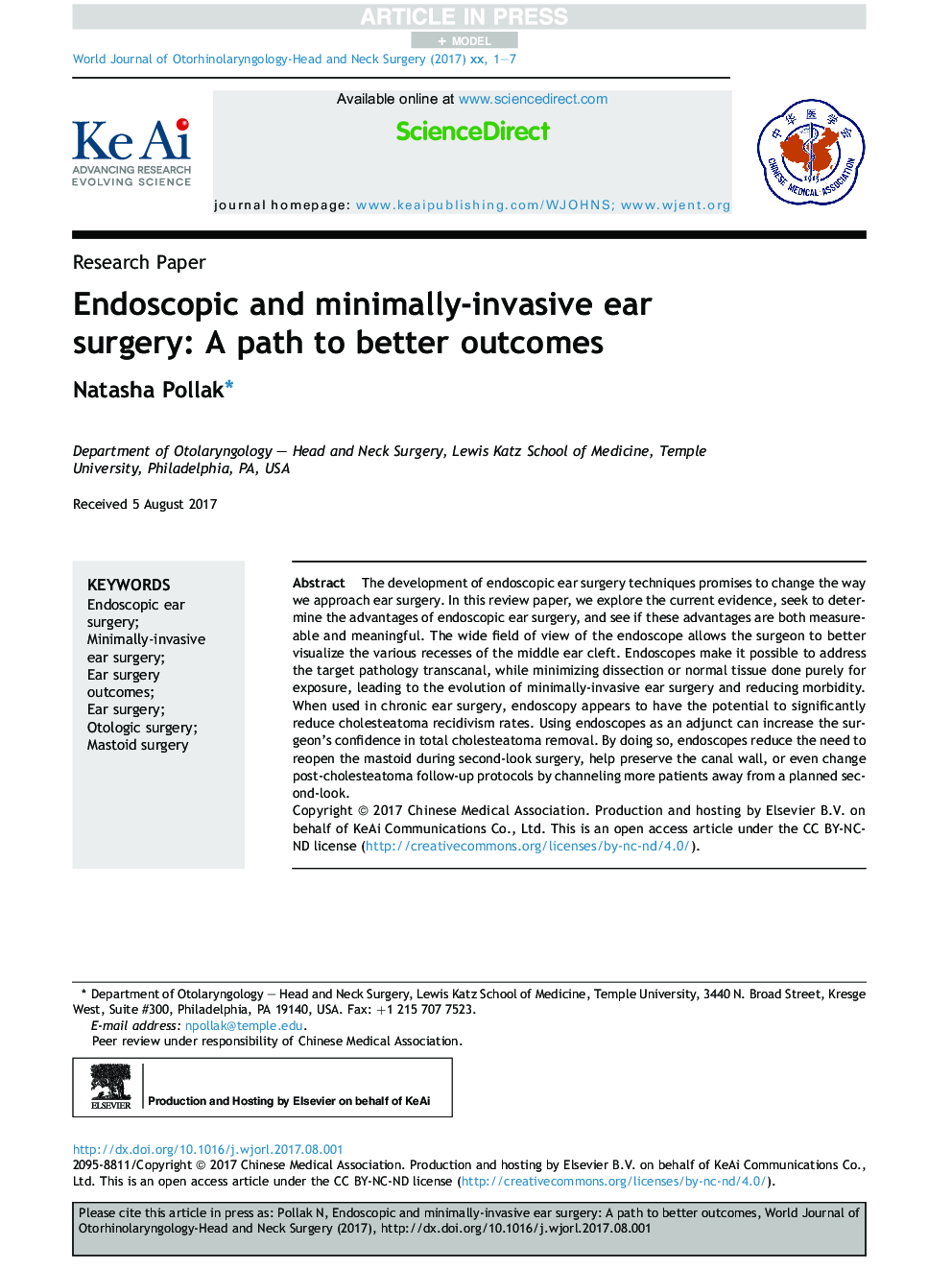| Article ID | Journal | Published Year | Pages | File Type |
|---|---|---|---|---|
| 8744050 | World Journal of Otorhinolaryngology - Head and Neck Surgery | 2017 | 7 Pages |
Abstract
The development of endoscopic ear surgery techniques promises to change the way we approach ear surgery. In this review paper, we explore the current evidence, seek to determine the advantages of endoscopic ear surgery, and see if these advantages are both measureable and meaningful. The wide field of view of the endoscope allows the surgeon to better visualize the various recesses of the middle ear cleft. Endoscopes make it possible to address the target pathology transcanal, while minimizing dissection or normal tissue done purely for exposure, leading to the evolution of minimally-invasive ear surgery and reducing morbidity. When used in chronic ear surgery, endoscopy appears to have the potential to significantly reduce cholesteatoma recidivism rates. Using endoscopes as an adjunct can increase the surgeon's confidence in total cholesteatoma removal. By doing so, endoscopes reduce the need to reopen the mastoid during second-look surgery, help preserve the canal wall, or even change post-cholesteatoma follow-up protocols by channeling more patients away from a planned second-look.
Related Topics
Health Sciences
Medicine and Dentistry
Immunology, Allergology and Rheumatology
Authors
Natasha Pollak,
